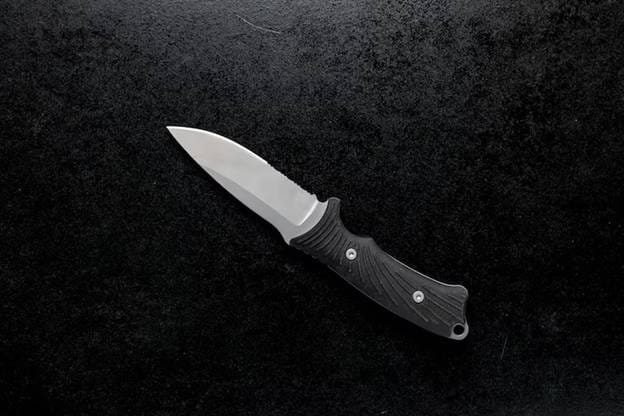
In a world filled with high-tech, tactical blades and complex folding mechanisms, there’s something refreshingly honest about a well-crafted best puukko knife. Originating from the Nordic wilderness, this humble tool has quietly earned a reputation as one of the most versatile and reliable fixed-blade knives on the planet. Whether you’re carving wood in a forest or slicing food by a campfire, a good puukko doesn’t just do the job-it becomes part of your journey.
What Is a Puukko Knife?
At its core, a puukko is a compact, fixed-blade utility knife with a simple yet highly functional design. Traditionally used by Finnish outdoorsmen, hunters, and craftsmen, the puukko features a single-edged blade with a flat spine, often between 3 and 5 inches long. Its handle is typically made from wood, birch bark, or antler, shaped to fit the user’s hand naturally, and always without a guard.
Unlike some modern knives that try to be everything at once, the puukko focuses on doing a few things exceptionally well: carving, slicing, and light-duty tasks that demand precision and control.
The History Behind the Blade
The puukko has deep cultural roots in Finland and other Nordic countries. It was never just a knife-it was a daily companion, worn on the belt, used for everything from skinning game to crafting wooden tools. In rural areas, gifting a puukko was seen as a sign of respect. Boys would receive one as a rite of passage, and soldiers carried them through war as personal lifelines.
While the design has remained largely unchanged for centuries, today’s best puukko knife models blend that heritage with modern steels, durable materials, and updated aesthetics-all without losing the soul of the original.
Why the Puukko Knife Still Shines Today
So, why has the puukko remained relevant in a market dominated by tactical blades and multi-tools? It’s simple: performance, portability, and purpose.
The puukko’s flat grind and scandi edge make it perfect for bushcraft and woodwork. You don’t need to muscle it-just let the geometry do the cutting. Its size makes it easy to carry and control, whether you’re whittling a tent peg or cleaning a fish. And the handle? It feels like an extension of your hand, even after hours of use.
While it might not be the flashiest knife on your gear shelf, it could easily be the most dependable.
Modern Interpretations of a Classic
Today, the market for puukko knives is more diverse than ever. Some stick close to tradition, hand-forged in Scandinavian workshops with natural materials. Others take a more contemporary path, using synthetic handles, stainless steels, and tactical sheaths.
You’ll find blades made from high-carbon 80CrV2, laminated steels like those used by Helle or Roselli, or premium stainless options like Sandvik 14C28N or Bohler N690. Some come with full tangs for extra strength; others honor the traditional stick tang construction for balance and lightness.
The best part? You don’t have to travel to Finland to find your perfect knife. Sites like New.Knife.Day curate selections of the best puukko knife options across all styles, budgets, and uses.
The Puukko in the Field
Ask anyone who’s spent serious time outdoors, and they’ll likely have a story about a puukko saving the day-or at least making it easier. These knives are not meant to live in drawers. They’re meant to be used, scratched, sharpened, and carried again.
They excel in food prep during hikes or hunts. They’ll feather a stick for fire-starting like nothing else. They’ll clean game with minimal mess. And because they’re usually paired with a snug-fitting leather sheath, they’re safe, silent, and easy to access on the move.
In fact, many seasoned bushcrafters argue that if they could only bring one knife into the wild, it would be a puukko.
What to Look For When Buying the Best Puukko Knife
If you’re in the market for your first (or next) puukko, here are a few things to consider:
Blade Steel
Are you using it in wet conditions? Then stainless steel might be your friend. Do you prefer a razor edge that’s easy to maintain in the field? Go with high-carbon steel. Each has trade-offs in toughness, corrosion resistance, and sharpening ease.
Handle Comfort
The handle should feel like it was made for your hand. Look for ergonomic shapes without hot spots. Wood handles offer warmth and tradition, while rubber or micarta provide excellent grip in wet conditions.
Sheath Design
Most traditional puukkos come with leather sheaths that hang low from the belt. Modern models may include kydex or multi-position carry options. Choose what works best for your daily wear or pack setup.
Purpose
Are you looking for a carving companion, a backpacking tool, or a bushcraft workhorse? Some puukkos are optimized for fine control, while others lean into durability and general use. Knowing your needs will help narrow the field.
A Knife That Deserves a Place in Every Kit
The puukko isn’t about hype. It doesn’t need flashy coatings or exaggerated marketing claims. It’s a knife that works-and keeps working-through cold mornings, rainy hikes, and long days at the campfire. It’s a reminder that sometimes, the simplest solutions are the best.
If you’re tired of blades that try too hard, or if you’ve never experienced the quiet brilliance of a knife that feels made just for your hand, it might be time to explore the world of the best puukko knife.
Because in the end, it’s not always the loudest tool that proves the most useful. It’s the one you can count on-over and over again.





